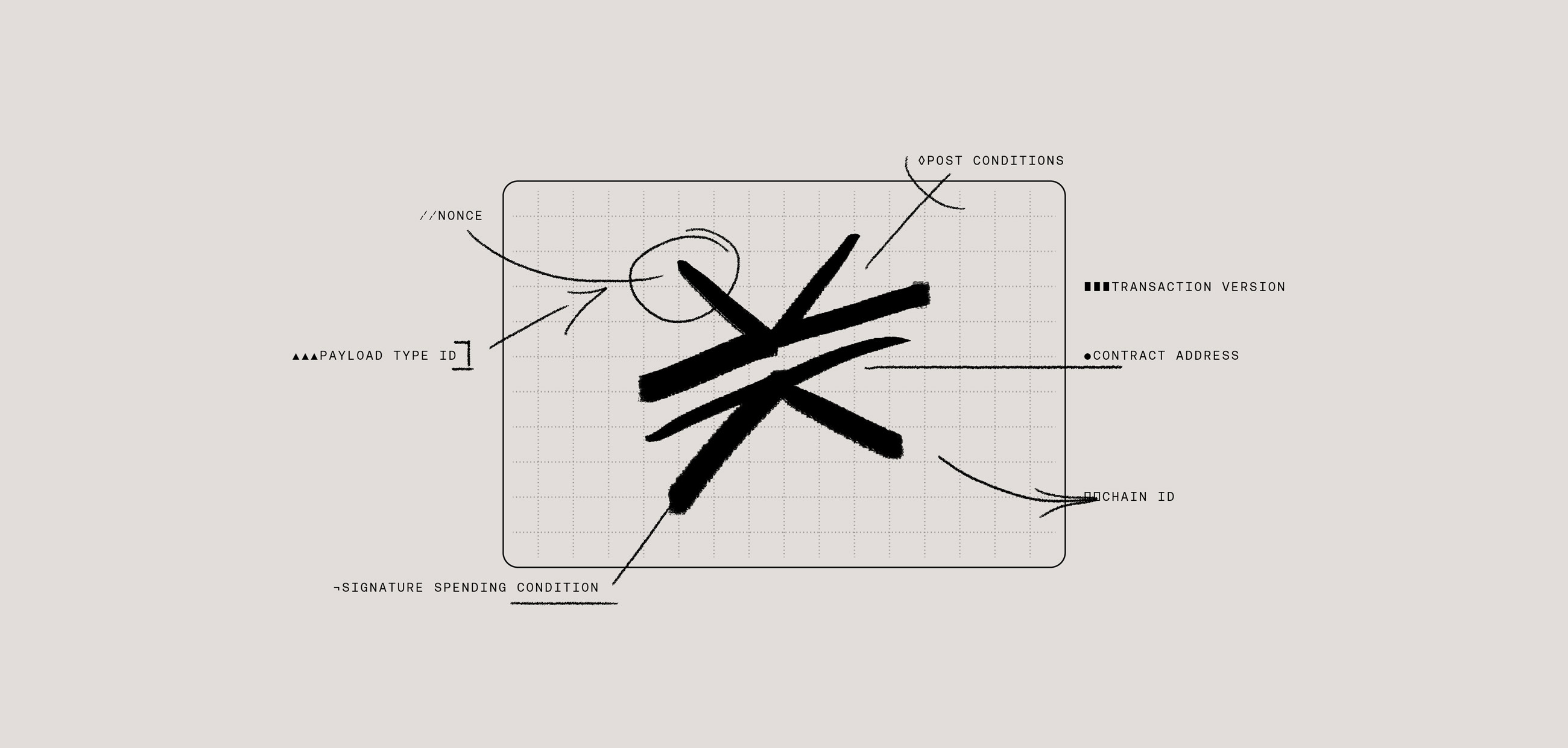The argument for building on Bitcoin was clear to me from the beginning. If you want to build a new internet, if you want a decentralized network of aligned users, if you want to prove the provenance of durable, digital artifacts and create apps that achieve mass adoption, then it feels obvious to build on Bitcoin—the oldest, most decentralized, and secure blockchain.
How can you aspire to build something durable and lasting if you can’t be confident that the protocol you’re building on will be around in 10 years? It feels contradictory, yet the narrative in Web3 has so often been “Bitcoin is dead.”
We’ve ignored that noise and kept our heads down at Hiro, building tools that enable devs to build apps for the Bitcoin-based future that we believe in. And in 2023, it felt like our groundwork finally started to pay off and that the Bitcoin narrative had turned to embrace the culture of innovation and building that had been vibrant in its first few years.
Devs started tinkering. Huge unlocks were made. Institutions and investors started publishing thesis after thesis underscoring the opportunity and excitement around Bitcoin layers. And people started paying attention again. The builder culture that surrounded Bitcoin in its early years had returned.
There’s never been a more exciting time to start building on Bitcoin than now, and I’ve never been more bullish about Bitcoin’s future. Here’s why.
Ordinals Reignite Building on the L1
Bitcoin Ordinals are exciting for a lot of reasons. At the core, they signal the return of builder culture to Bitcoin. Experimentation and innovation are back. Builders are looking at Bitcoin with new eyes, and it’s hard to overstate the importance of that vibe shift.
The excitement around ordinals is playing out in the market. Users have created 47M ordinal inscriptions and generated $147M in fees. There have been days when ordinals accounted for 85% of the activity on Bitcoin, a mind-boggling statistic.
Ordinals themselves open up fascinating possibilities on Bitcoin. NFTs native to Bitcoin, new metaprotocols on top of like BRC-20 introducing fungible tokens to Bitcoin, recursive inscriptions that can leverage and build off each other like Lego bricks. Users have inscribed the entire video game DOOM, functioning websites, and more. It feels like we are barely scratching the surface of what’s possible.
Most interestingly, Ordinals have pushed the conversation on what it means to be censorship-resistant and what exactly is the core culture of Bitcoin. Bitcoin’s technical community is actively debating how innovations on Bitcoin layers influence network stability and game theory, whether nodes should prune or filter inscriptions (or “non-monetary use cases”) or do nothing at all.
While some folks are annoyed by or outright against inscriptions, it seems that most people agree that actively censoring transactions is not in the best interest of Bitcoin. Ultimately, Ordinals activity is good for “Bitcoin layers” and motivates the Bitcoin technical community to think about incentives and the fee environment.
One of the things we learned from devs in this process is that a big pain point for them is indexing the Bitcoin chain. To build with ordinals, many devs have to maintain their own index of blockchain chainstate, which can incur high storage costs and be challenging to keep up to date. Re-orgs of chainstate happen often, and every time there’s a re-org, you have to re-index the entire chain, which can be a time-intensive process.
We decided to solve that. We built an open source indexing engine (Chainhook) and a specific indexer for ordinals called Ordhook that enables devs to build consistent, reorg-proof databases that index only the information they want— creating a lighter-weight index.
Rollups & Programming on Bitcoin
Just when you succumb to the inevitability of Bitcoin ossification, a researcher says “hold my beer” and shows you something new that’s possible on Bitcoin. 2023 saw a ton of work on bringing rollups and programming to Bitcoin, exemplified by the BitVM white paper, published on October 9th, stirred up the Bitcoin community with a proposal to bring more programmability and functionality to Bitcoin without changing the Bitcoin protocol.
Written by Robin Linus, the project lead at ZeroSync, another exciting Bitcoin project working on ZK proofs, BitVM outlines a design that follows optimistic rollups on Ethereum and suggests a method by which contract execution can happen off-chain and verification on-chain.
It’s a research paper to be clear, but it signals that we are still discovering new ways to use Bitcoin and possibly add limited programmability on the Bitcoin L1, which unlocks Bitcoin rollups and a new generation of Bitcoin layers. I’m excited to see how rollups integrate with Bitcoin layers like Stacks, something people are already actively exploring. We believe in a multi-chain world, and a multi-layer world, and at Hiro, we will build tools wherever Bitcoin devs need them the most, whether for rollups offering scalability, smart contracts offering programmability, or a metaprotocol for meme coins.
A Glimpse of Sustainability in a Post-Block Reward Future
The Bitcoin chain is secured by competition between miners and their desire to earn Bitcoin. As Bitcoin block rewards decrease with each halving, miner profitability will rely more and more on transaction fees, which historically have accounted for just a fraction of what miners earn. So a common question of Bitcoin is: what will happen to the chain when these block rewards end?
2023 gave concrete evidence that transaction fees can support Bitcoin long-term. Boosted by the surge of demand created by ordinals, at times Bitcoin transaction fees surpassed block rewards for the first time since 2017. Creating demand for block space is critical for Bitcoin’s longevity, and we saw a glimpse of what that might look like this year.
High fees are not without consequences though. While it might be more profitable for miners, high fees make transacting in Bitcoin more expensive for everyday users—people all around the world who use Bitcoin as an alternative to their failed financial systems.
Bitcoin layers are a critical solution to that problem: how can you keep fees cheap enough for users but valuable enough for miners? The answer lies in separating the two markets into different layers. Bitcoin layers enable devs to build apps and projects that settle back to the Bitcoin blockchain. That increases the demand for block space on the Bitcoin chain, driving up transaction fees for Bitcoin miners. Meanwhile, users transact on various layers, where fees are lower for everyday use cases and settle back on the Bitcoin chain for finality.
What’s Ahead in 2024
It’s not just the developments of 2023 that are making me excited about building on Bitcoin. It’s also the major milestones and innovations that lie ahead in 2024, which include:
The Bitcoin Halving
Every 4 years, we go through the Bitcoin Halving, in which the BTC block rewards earned by miners get cut in half. The next halving is just around the corner and will occur sometime in late April 2024.
While there are concerns that halving the rewards could lead to network consolidation and force smaller miners to drop off, we haven’t seen that play out in practice (although this does demonstrate the need to make sure miners are earning transaction fees!). Indeed, I am bullish on the next Bitcoin Halving and think it will generate greater excitement and attention on the Bitcoin ecosystem as a whole. And while the past cannot predict the future, the past 3 halvings (Nov 2012, July 2016, May 2020) have each preceded a major bull run for the entire industry…
Fungible Tokens on Bitcoin
The demand for fungible tokens on Bitcoin became clear in 2023. Quickly following the innovation around Bitcoin Ordinals, a clever dev by the name of domo figured out how to create fungible tokens via ordinals in a new experimental metaprotocol called BRC-20.
Today, BRC-20 activity dominates ordinals activity. 85% of new inscriptions relate to BRC-20 mints, and 87% of ordinals-related fees are generated by BRC-tokens. 2 BRC-20 tokens even have market caps over $1B. Like I said, the demand is there, but the design of BRC-20 is imperfect and inefficient—most actions with BRC-20 tokens require two transactions to be processed by the network.
But that’s something that Bitcoin devs are already working on. Take Runes for example. Runes is a recent protocol by ordinals creator Casey Rodarmor, proposed in September 2023. Runes simplifies the groundwork laid by BRC-20 and is a protocol that is light-weight with a smaller on-chain footprint. Lightning is also tackling this problem through Taproot Assets, which lets users issue new assets on Bitcoin.
So far, we’ve mostly seen the creation of meme coins on Bitcoin, but I’m watching the space carefully for the first breakthrough use case of fungible tokens on Bitcoin, particularly a successful stablecoin. Stablecoins are one of the first breakthrough use cases in crypto, and Runes, Taproot Assets, and BRC-20 pave the way for stablecoins on Bitcoin. Hiro added BRC-20 support earlier in 2023, and when devs need enterprise-grade developer tools for other implementations of fungible tokens, we will be there to support them.
The Arrival of sBTC
Stacks is the fastest-growing Web3 project on Bitcoin. It’s a Bitcoin layer that enables smart contracts and apps for Bitcoin, and it’s where we build most of Hiro’s developer tooling. Later in 2024, a major upgrade is coming to Stacks.
Dubbed the “Nakamoto Release”, this hard fork will bring major improvements to Stacks, including fast blocks (about five seconds) that put Stacks on par with other fast L1 chains and Bitcoin finality, meaning an attacker cannot reorg the Stacks chain without also reorging Bitcoin. Quite the feat.
This release will also introduce a new Bitcoin-backed asset called sBTC. sBTC is a programmable Bitcoin asset that will be used across all kinds of apps on Stacks and Bitcoin. Unlike other tokenized Bitcoin assets, sBTC is open membership, decentralized, trust-minimized, and collateral-backed, making it the BTC bridge most in line with the core principles of Bitcoin itself. I believe sBTC is the key to unlocking Bitcoin’s $800B of latent capital, and it will be a major unlock for developers in 2024. I can’t wait to see what they build with it.
Join the Bitcoin Movement
It’s never been a more exciting time to get involved with building on Bitcoin. New innovations are happening all the time. Just yesterday a new inscription protocol on Stacks set a record for the most transactions per block, and there’s always something new just around the corner.
If you’re new to Bitcoin and to Hiro, there’s plenty of ways to get involved. Take a Bitcoin primer course to learn how to build NFTs on Bitcoin, sharpen your skills with the Hiro Hacks coding challenges, or contribute to our open source tools. I think you’ll find the Bitcoin community welcoming. We love collaborating.







